Geographical Division of Earth & its Relation to Solar system
by Devender
0 3947
The Earth is divided into various parts to understand it and its relation to the Solar system better.
Geographical Division of Earth & its Relation to Solar System
- The shape of Earth:
- The length of latitudes increases from poles to the equator, it is 0 at poles and maximum at the equator
- Earth is inclined by 23.5* to its orbital plane
- 23.5* is the max. latitude up to which sun rays can be perpendicular to any place which means all the places between Tropic of cancer and Tropic of Capricorn receives vertical rays of sun twice a year whereas both the tropics receive it only once
- It also means that the Tropic of cancer will get vertical sun rays at the summer solstice when the Northern hemisphere of the earth is at max. inclination from sun rays
- The Tropic of Capricorn will get vertical sun rays at the winter solstice when the southern hemisphere of the earth is at max. inclination from sun rays
- Greenwich Meridian:
- International Date Line:
- Graticule:
- Great Circles:
- Summer Solstice:
- Winter Solstice:
- Equinoxes:
- Seasonal Changes and Their Effect on Temperature:
- Dawn & Twilight:
- Longitude and Concept of time:
- Earth’s Natural Satellite:
- Eclipses:
The shape of Earth is oblate spheroid or oblate ellipsoid shape which is slightly flattering at poles and slightly bulging at the equator whereas its polar radius is approx. 21 km shorter than equatorial radius.
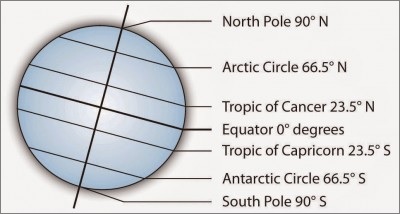
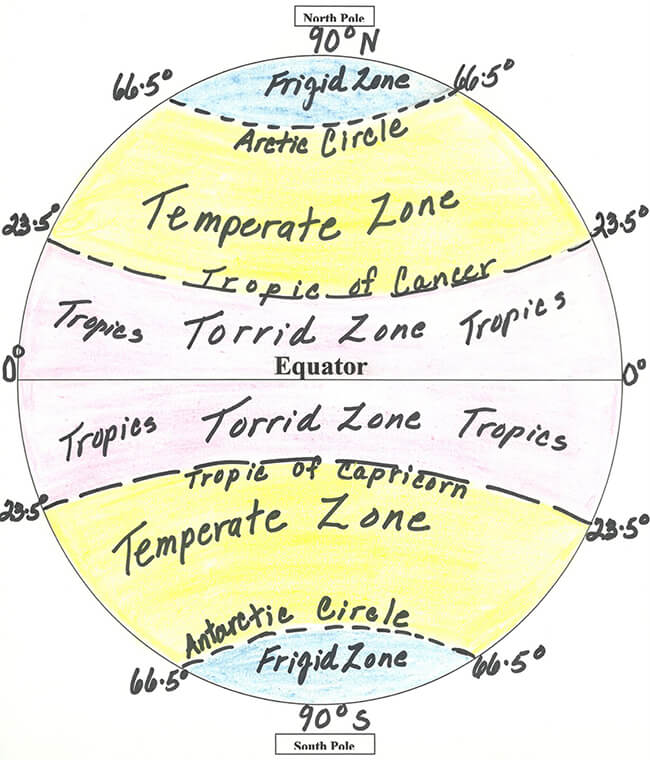
Distinct Features:
It is also known as the Prime Meridian or Time Meridian. It divides the earth into the eastern & western hemispheres. It is passing through the Royal Observatory at Greenwich near London.
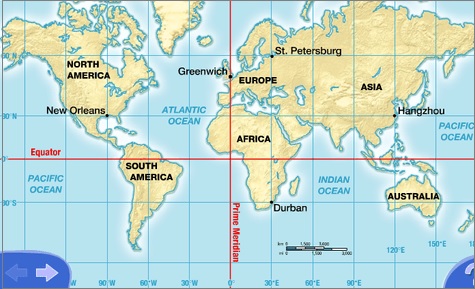
It is the exact opposite to Greenwich meridian at a longitude of 180*
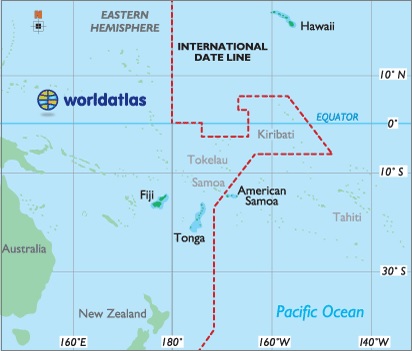
It is a network of parallels and meridians drawn on the globe which helps to locate a place with given longitudes & latitudes.
These are imaginary circles that divide the earth into two equal parts and its center lies at the center of the earth. The largest circles that can be drawn on the globe are the Equator and all meridians.
Rotation of Earth
Earth rotates around its own axis from west to east in the anti-clockwise direction and Earth revolves around the Sun in an Elliptical path from West to East in the anti-clockwise direction. The axis of Earth rotation is inclined at 66.5* to its plane of elliptic and at 23.5* to perpendicular to the plane of elliptic whereas the plane of earth equator to plane of elliptic or earth’s axis to the axis of revolution is inclined at 23.5*
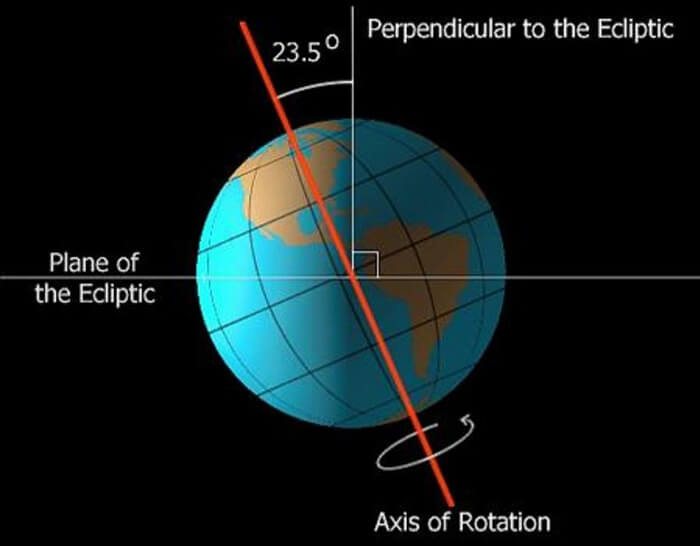
The velocity of the earth's rotation increases from poles to equator which is correlated with the length of the parallels which also increases from poles to the equator. There is 0 velocity at poles.
The weight of the body is greater at poles while it is less at the equator because of: greater centrifugal force at the equator due to greater velocity at the equator and higher gravitational force at poles due to lesser radius of poles than the equator.
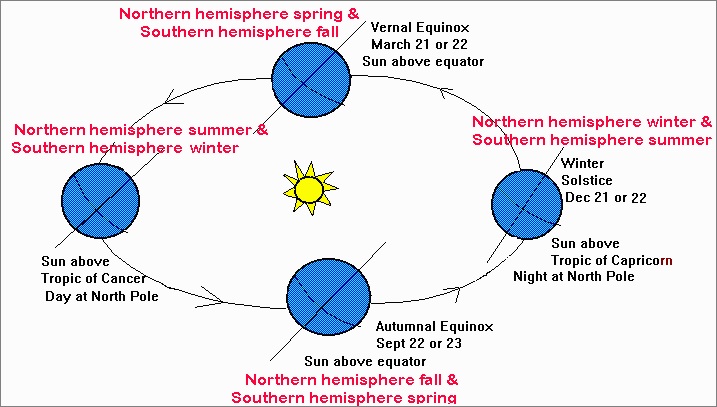
Earth moves in two different ways in space. It rotates on its own axis from west to east once every 24 hours which causes Day and Night whereas it revolves around the sun in an orbit every 365(1/4) days which causes the seasons and the year.
Earth's axis remains tilted in the same direction throughout the revolution around the sun and its axis continues to point to the same spot in heaven known as Polaris / polestar/ parallelism of the axis. Polestar: It is the brightest star in the sky in the northern direction also known as the northern star.
Solstices
When Sun is at the greatest distance from the equator, its rays fall vertical either at tropic of Cancer or tropic of Capricorn.
As we already discussed that Earth's axis leans at a max of 23.5* in the northern hemisphere towards the sun so, the sun rays fall vertical at the Tropic of cancer around 21/22 June that brings the summer season in the Northern hemisphere.
After this, the duration of days starts decreasing which means 21/22 June is the longest day in the Northern hemisphere with daylights of 14 hrs at Tropic of Cancer, 12 hrs at the Equator, and 10 hrs at Tropic of Capricorn. The day lasts for 24 hours between Arctic Circle & North Pole day whereas the Night lasts for 24 hours between Antarctic Circle & South Pole. At the South Pole, night lasts for approx. 6 months, and at the North Pole, the day lasts for 6 months.
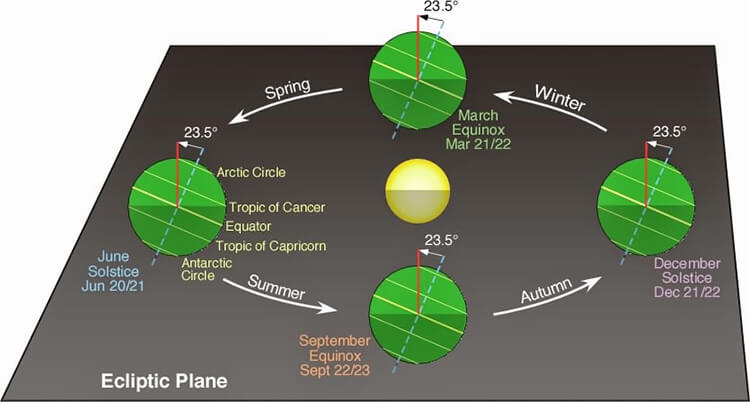
Earth’s axis leans at max 23.5* in southern hemisphere towards the sun so its ray falls vertical at Tropic of Capricorn around 21/22 Dec bringing summer season in Southern hemisphere and the duration of days starts increasing in Northern hemisphere. So, Dec 21/June 22 are the shortest days in the Northern hemisphere.
During this day, daylights of 14 hrs at Tropic of Capricorn, 12 hrs at the Equator, and 10 hrs at Tropic of Cancer while between Antarctic Circle & South Pole day lasts for 24 hours and between Arctic Circle & North Pole the same duration of night lasts and the day lasts for 6 months at South Pole and night last for 6 months at North pole.
The sun is vertically overhead at the equator on two days of the year usually on 21 March and 21 September however, the dates change as a year is not exactly 365 days. These two days are known as equinox which means on these two days, the day and night are nearly equal in all parts of the world.
In the summers, Sun is overhead and its rays fall almost vertically on the earth concentrating heat to small areas which makes it warm due to a rise in temperature. During the winters, the sun rays come less directly through the atmosphere and its heat gets absorbed by the atmosphere and water vapor. Also, the sunrays fall obliquely spreading over a great area. Hence, the temperature remains low in Winters.
During summers, the days are longer than nights and more heat is received during the daytime and less heat is lost at night. As a result, the net gain in total heat received and temperature rises in summer. Whereas, in winters days are shorter and nights are longer which reverses the effect.
The period between sunrise and full daylight is known as dawn and the period between sunset & complete darkness is called twilight. This happened because during the periods of dawn and twilight earth receives diffused or refracted light from the sun while it is still below the horizon.
As the sun rises and sets in the vertical path at the equator, these periods are very short however, in temperate latitudes, the Sun rises & sets in an oblique path and hence the period of refracted light is longer than that at the equator, which is much longer at poles.
Earth completes one rotation in 24 hours that means it completes 360* rotation in 24 hours which is 15 * in one hour or 1* in 4 minutes. As Earth moves in the West to the East direction, the places located in the east gain time while those located in the west lose time.
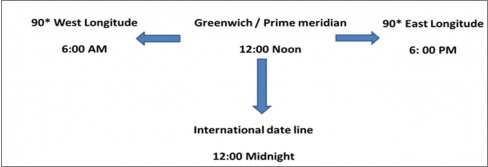
12:00 noon is considered when the sun’s altitude is highest & exactly over the meridian at that place generally and time at all the places located at particular meridian i.e. north & south will be same, however, places located at east & west will have different local time.
The standard time of a country is the local time of a selected longitude crossing through a place in the country. The Standard time of India is the local time of longitude passing through Allahabad situated at 82.5* East of Prime meridian which is 5 & half hours ahead of GMT.
If someone crosses the international dateline, the Calendar date is changed by one day. However, the line is deviated at some places to mark the same date at some countries & islands. Thumb Rule is loose 12 hrs west of Prime meridian & gain 12 hrs east of the prime meridian.
Moon is the natural satellite of Earth and it rotates around Earth in an elliptical orbit same as the earth rotates around Sun. The axis of the moon is inclined approx. at 58.4* with respect to the Plane of the ecliptic. So, the distance between earth and moon keeps on changing and only 59% of the moon's surface is visible from Earth.
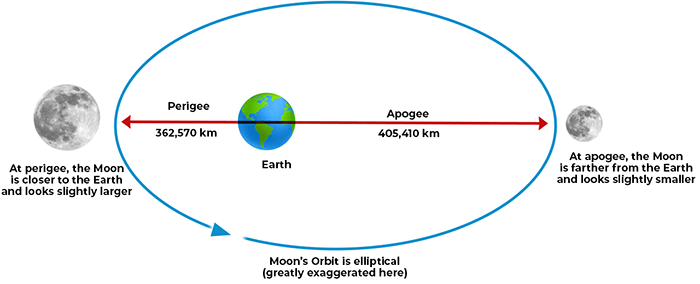
Perigee is the nearest point to the moon’s orbit from Earth whereas Apogee is the farthest point to the moon’s orbit from Earth. Sidereal Month is when Moon completes 1 rotation in 27 days 7 hrs & 43 min approx. whereas Synoptic Month is Moon completes 1 rotation in 29 days 12 hrs & 44 min approx.
An Eclipse is a partial or total obstruction of light from a celestial body as it passes through the shadow of another celestial body. As a matter of fact, an eclipse should happen every month as the earth revolves around the sun and the moon around the earth. However, the Plane of the moon’s orbit around the earth is inclined at 5.9* to the plane of the earth’s orbit around the sun.
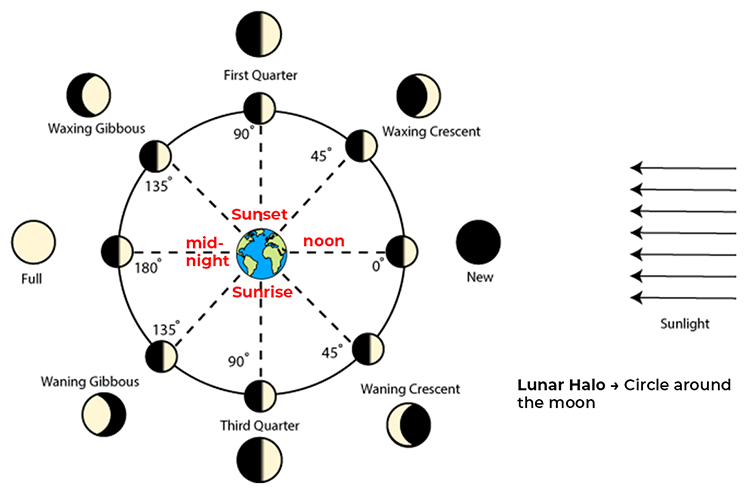
Solar Eclipse:
When the moon comes between the earth and the sun covering partial or whole sun then, a solar eclipse occurs.
Lunar Eclipse:
When Earth comes between moon and sun. It usually occurs at the Full moon.

Share:

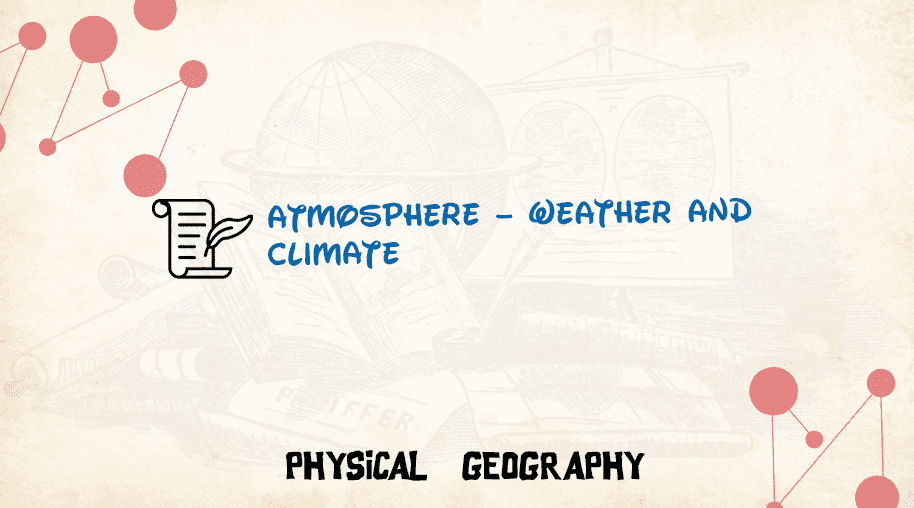
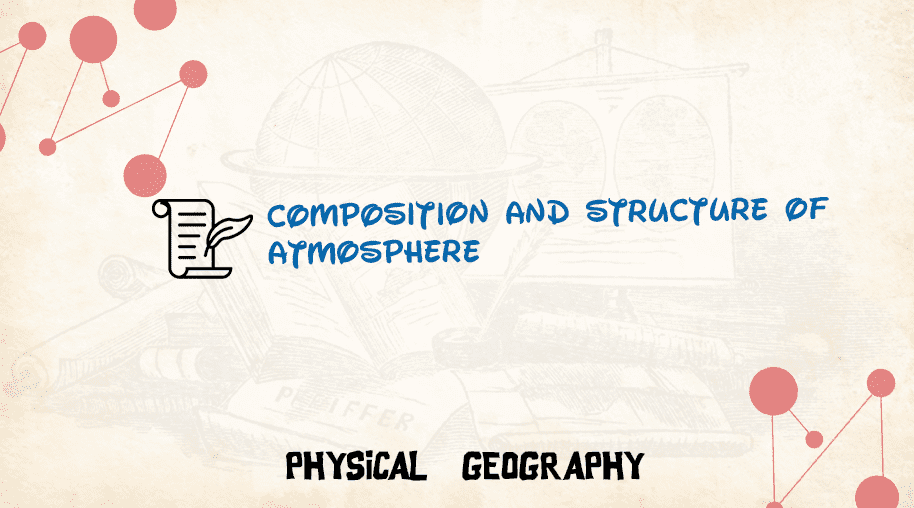
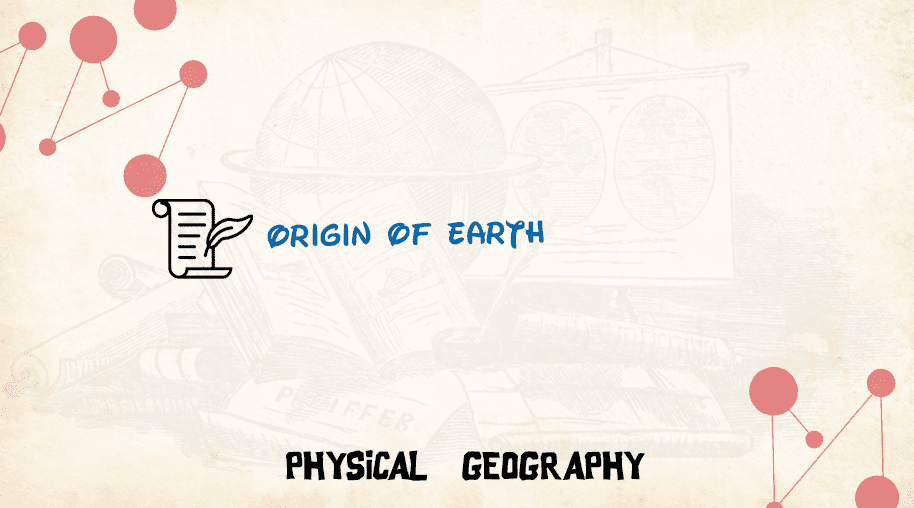
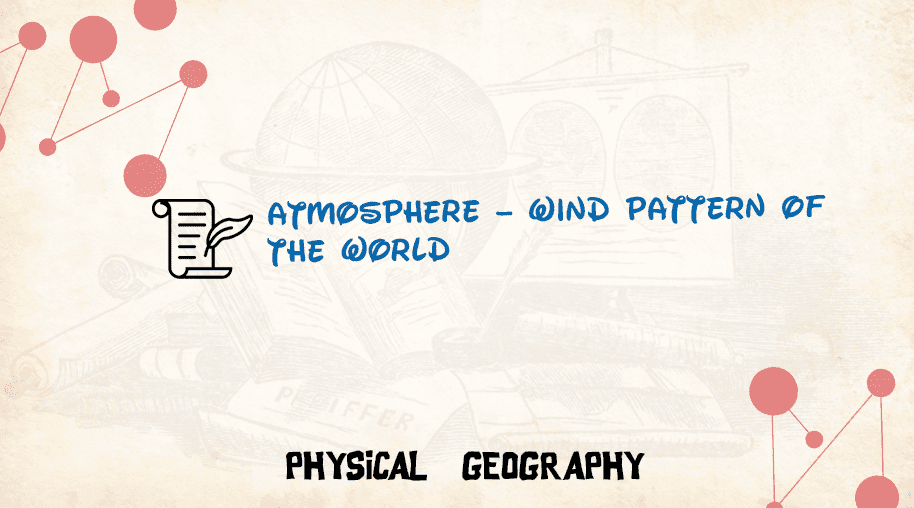


Comments
Waiting for your comments